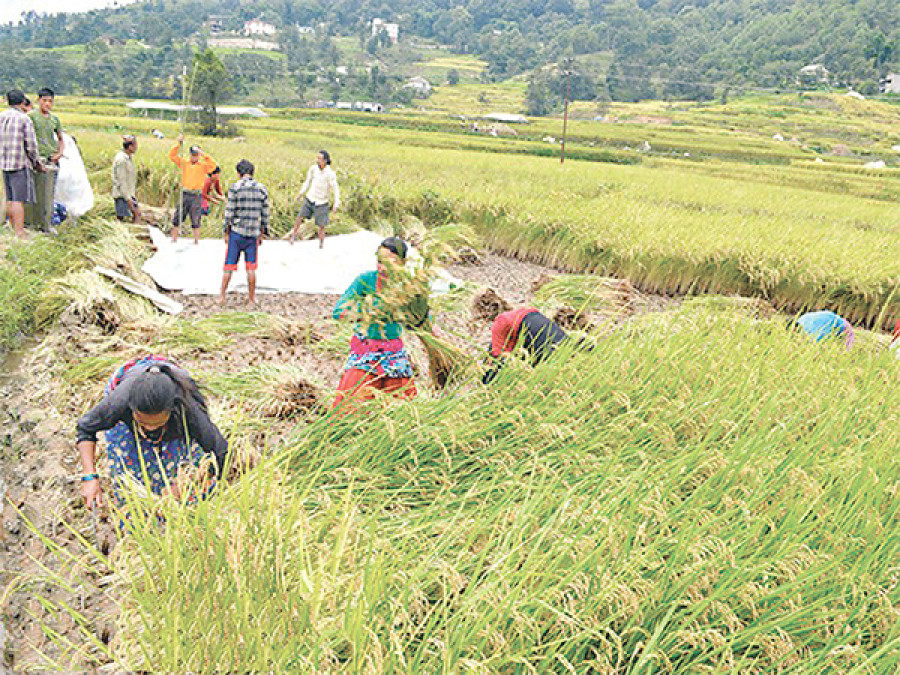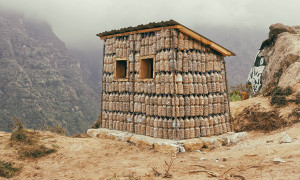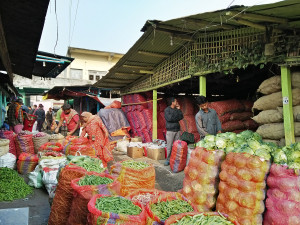Money
Paddy growing season passes sans fertiliser
Nepal’s paddy production is likely to shrink significantly this year due to a failure to apply chemical fertilisers during the prime growing period since farmers have been unable to get them, as highways remain blocked and transportation crippled by a prolonged unrest in the Tarai.
Nepal’s paddy production is likely to shrink significantly this year due to a failure to apply chemical fertilisers during the prime growing period since farmers have been unable to get them, as highways remain blocked and transportation crippled by a prolonged unrest in the Tarai.
After having endured drought and erratic rain throughout the June-August transplantation period, Nepali farmers have now been hit by a shortage of the vital farm input, and this may bring down the paddy yield, said Uday Chandra Thakur, spokesperson of the Ministry of Agricultural Development.
Thakur added that they had huge stockpiles of fertilisers but could not deliver them to farmers. He said that the ministry was yet to ascertain the expected amount of paddy losses, but some experts said that the output could plunge by at least 20 percent this year.
According to him, two state-owned fertiliser suppliers-Agriculture Inputs Company and Salt Trading Corporation-have a combined stock of 18,659 tonnes in their warehouses. In addition, 132,480 tonnes of fertilisers have been stranded at different transit points in Nepal and India.
Sales of fertilisers have reached 53,416 tonnes from June till Tuesday, compared to 61,000 tonnes during the same period last year. Agro experts said that the nutrients were applied twice in the summer-during the vegetative or transplantation and reproductive or plant growing phase. At each growth stage, the paddy plant has specific nutrient needs.
As fertiliser arriving through informal trade channels from India accounts for nearly 60 percent of the supply in Nepal, it could be a greater worry for farmers in the Tarai belt due to India’s unofficial trade blockade of Nepal, experts said. Paddy plants take around three to six months to grow from seeds to mature plants, depending on the variety and environmental conditions.
They undergo three general growth phases-vegetative, reproductive and ripening. “We have predicted a significant decline in paddy production this year as we have not been able to supply fertilisers to the farmers during the vital period. During this critical phase, the plants need a higher level of fertilisers,” said Thakur.
A drop in production is expected to push up imports and prices. The country’s fragile economic growth prospects that have been shattered by the deadly April 25 earthquake could receive another blow from a drop in production.
A revival of the monsoon in many Tarai districts in the last week of August, after a month-long drought during the key paddy transplantation period, had generated optimism among farmers about this year’s harvest, but the upbeat mood dissipated after the Tarai unrest.
Paddy is cultivated on 1.5 million hectares of arable land in Nepal. Due to a drought in eight Tarai districts and erratic rain elsewhere, nearly 10 percent of the total paddy fields have been allowed to lie fallow this season, said the ministry.
The country produced paddy worth Rs100 billion in the fiscal year 2014-15. The paddy output dropped 5.1 percent to 4.78 million tonnes last year due to a late monsoon and untimely rainfall. The ministry had estimated a loss of Rs5 billion last year.
The agricultural sector, which accounts for about one-third of the real GDP, grew by a meagre 1.9 percent, particularly due to a fall in paddy output. Nepal’s agriculture growth rate averaged 2.9 percent during the last decade.
Agro experts said the economic outlook for next year was bleaker amid a weak monsoon. Agriculture, the major contributor to Nepal’s economy, is mainly rain-fed. In 2011-12, paddy production rose an impressive 13.7 percent, and as a result, the farm sector’s growth rate swelled to 4.63 percent.
However, in 2012-13, paddy output dropped 11.3 percent and the economic growth rate slumped to a six-year low of 3.5 percent. Nepal’s economy inched up just 3 percent in the last fiscal year due to the April 25 earthquake and a drop in paddy production.
The Asian Development Bank said that the weak monsoon had already affected agricultural planting, particularly paddy, in the eastern and central administrative regions. The loss of agricultural land to earthquake-triggered landslides will also lower the potential agricultural output this year.
EXTRA IMPORTS
Rice and paddy imports jumped by a whopping 43.4 percent to Rs24.75 billion in the last fiscal year largely due to disappointing summer harvests, according to the statistics of Nepal Rastra Bank. All rice imports were made from India.
The rice import bill stood at Rs13.14 billion in 2012-13 and surged to Rs17.26 billion in 2013-14. The central bank said that increased imports of agricultural products had emerged as one of the major reasons for the ballooning trade deficit with the southern neighbor.
“As paddy production is likely to drop significantly, it could put extra pressure on imports and prices this year,” said Hem Raj Regmi, chief statistician at the Ministry of Agricultural Development. An expert projected that the rice import bill would cross Rs40 billion this year.




 9.12°C Kathmandu
9.12°C Kathmandu














